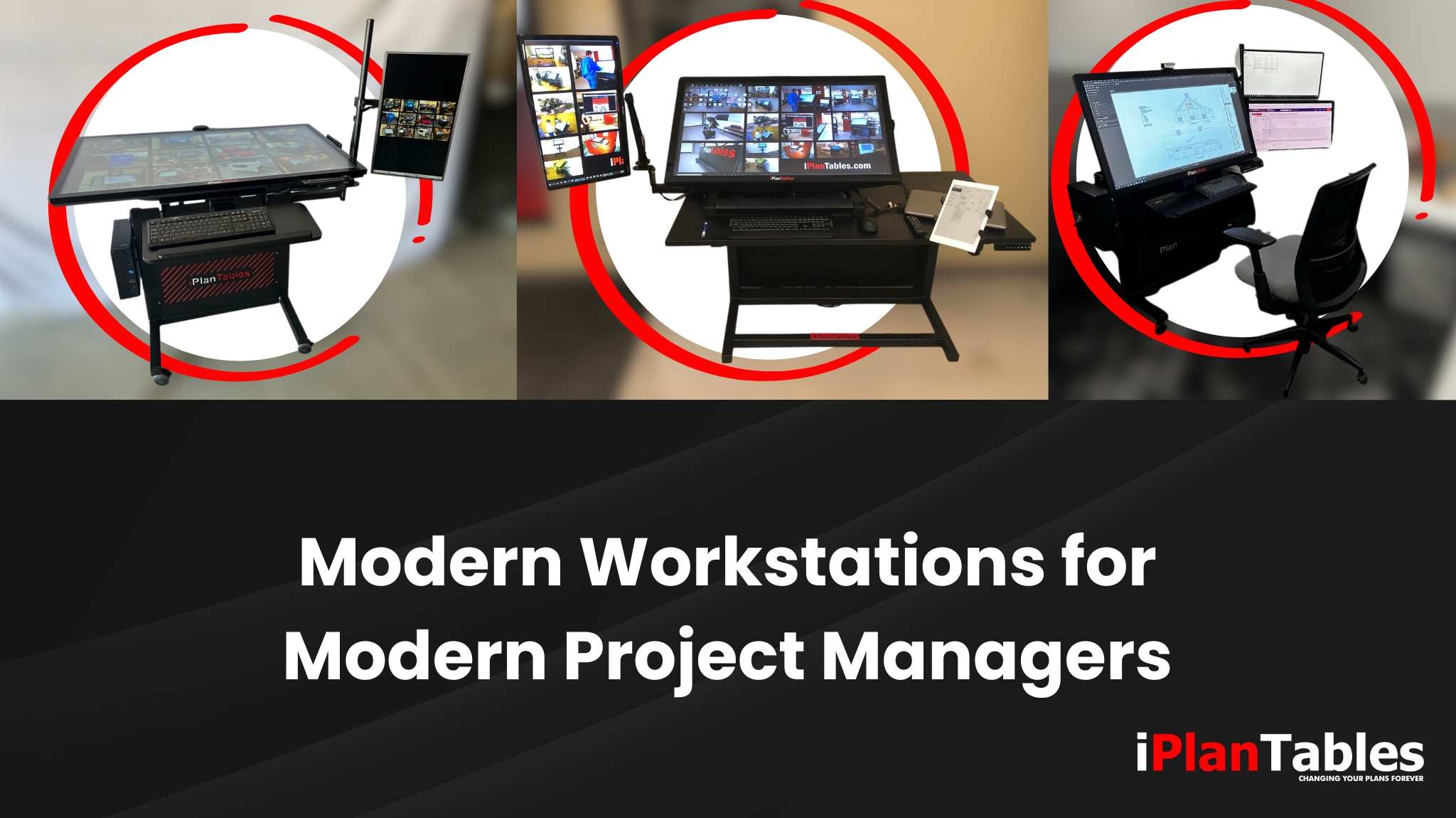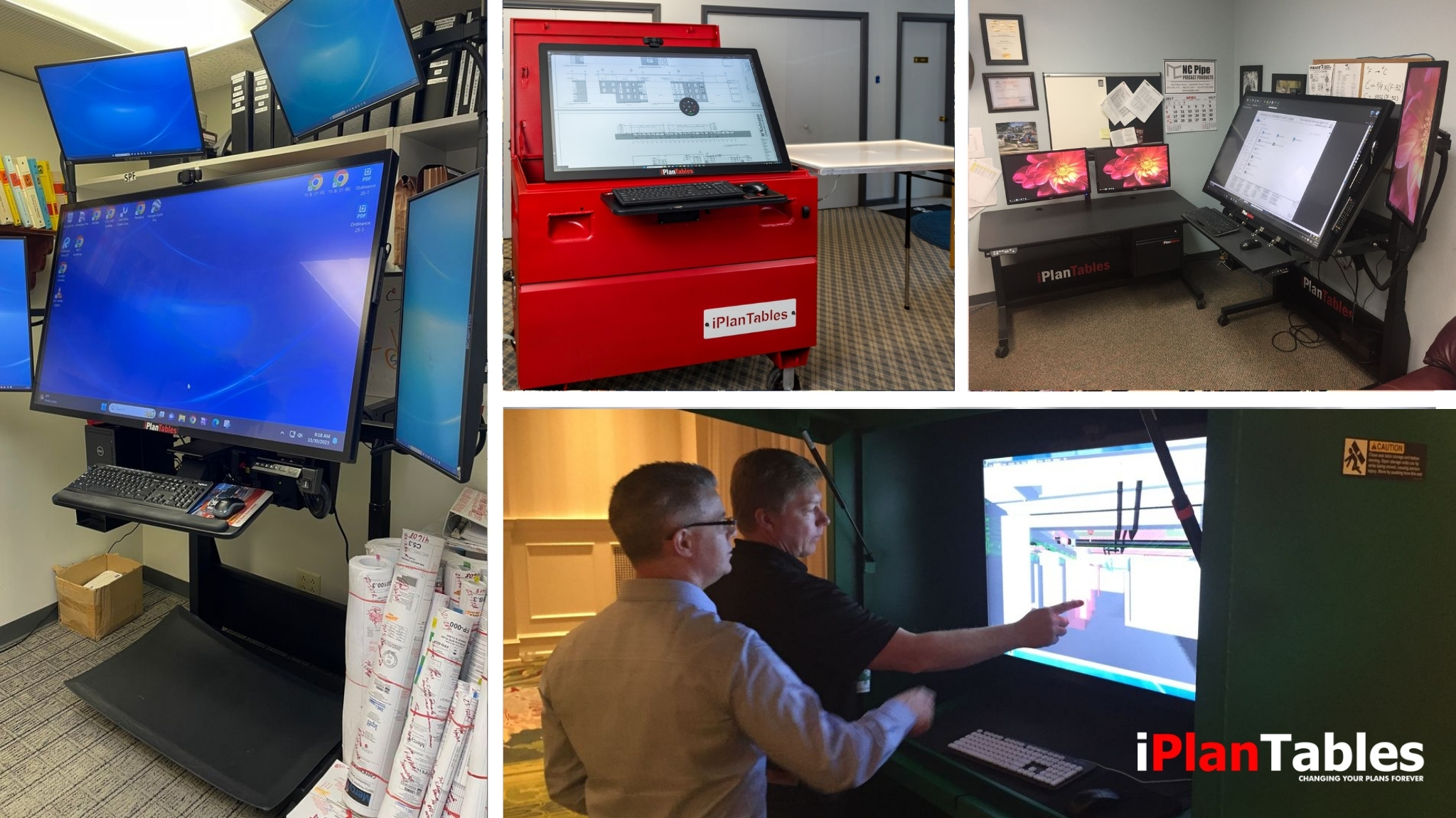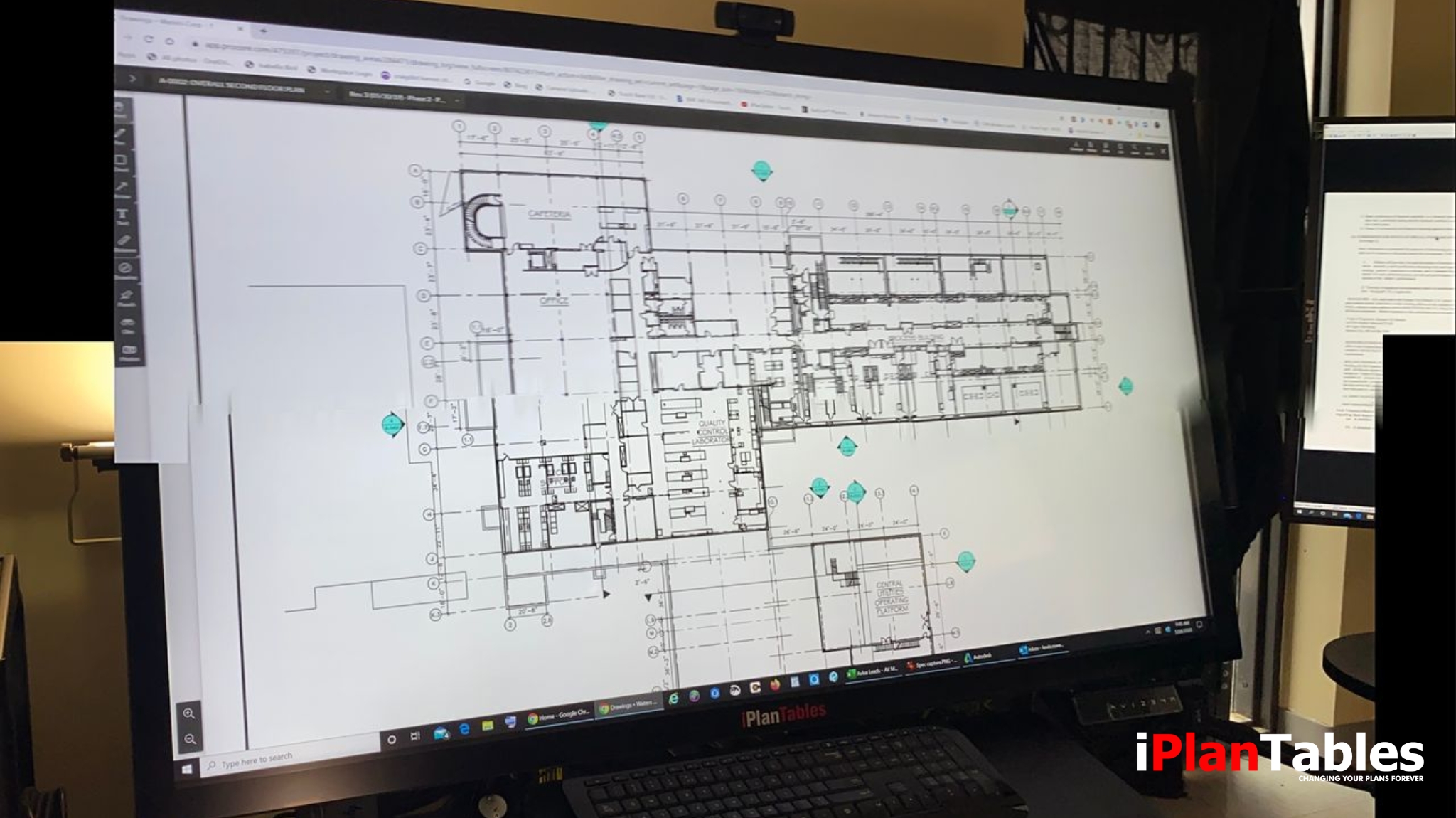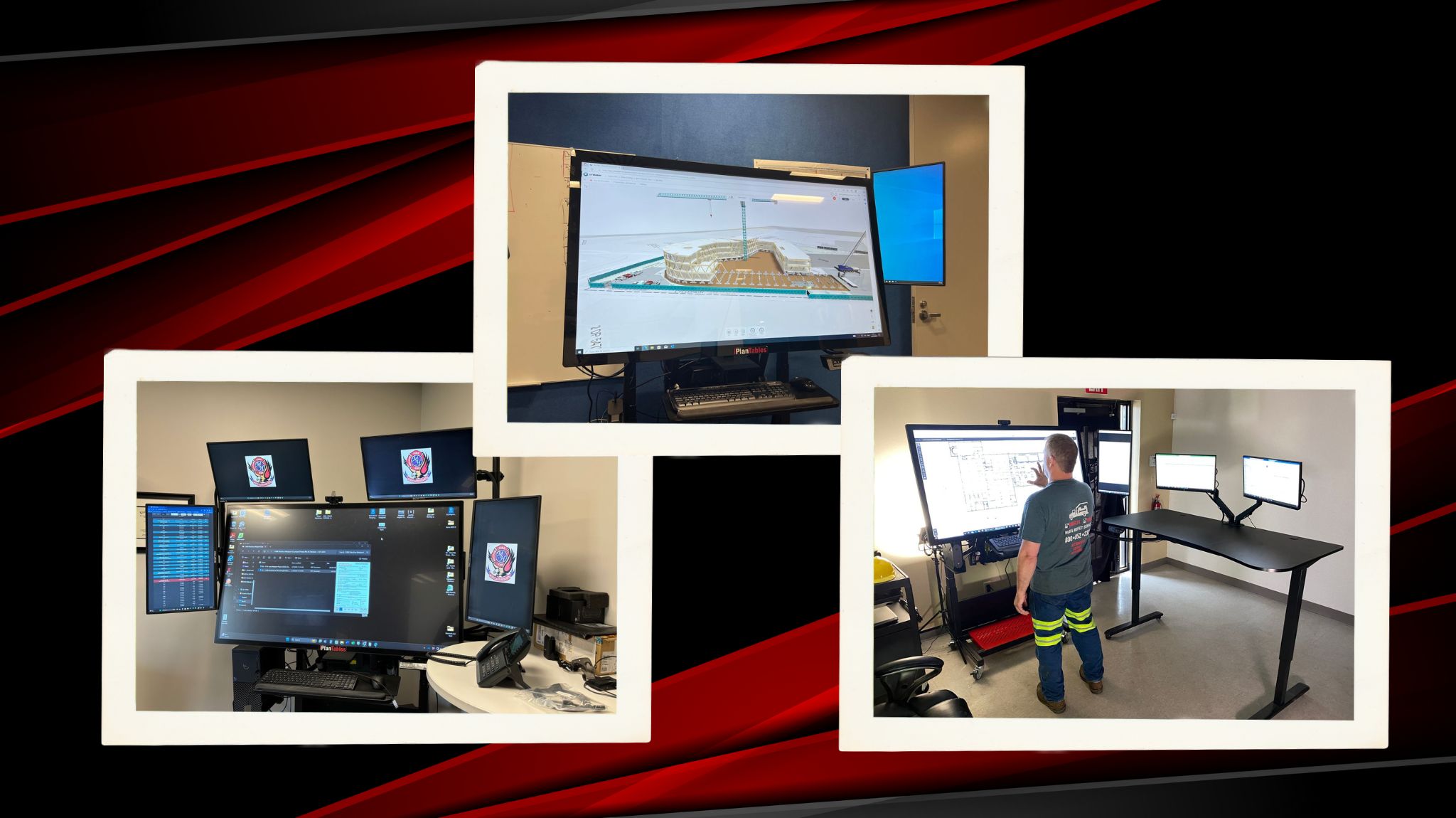
Plan reviewers, estimators, and construction professionals don’t just battle tight deadlines—they battle fatigue, eye strain, and chronic back pain caused by static, outdated workstations. Exploring the advantages of using a sit-stand workstation can enhance not just comfort but also productivity and health.
According to a 2022 CDC report, teams using adjustable standing desks reported 54% less upper back and neck pain in just four weeks. Meanwhile, a study from Texas A&M University found that workers using sit-stand desks were 46% more productive than those seated for the same duration.
When accuracy, focus, and review time directly impact jobsite performance or project approval timelines, workstations can’t be an afterthought. The benefits of standing desk setups extend far beyond ergonomics—they improve cognitive performance, collaboration, and plan review efficiency.
Why the Benefits of Standing Desk Setups Go Beyond Health
The shift toward standing desks isn’t just a wellness trend. It’s a direct response to the evolving way professionals engage with information, especially in construction management, permitting, and plan review.
In these high-stakes environments, the advantages of height-adjustable workstations are practical, measurable, and immediate.
Benefits of Standing Desk: Enhanced Focus and Reduced Cognitive Fatigue
Reducing sedentary time enhances team performance, including improved thinking, focus, and problem-solving abilities. The Harvard School of Public Health reports that reducing sitting time by just 90 minutes a day can significantly improve mood, energy, and cognitive clarity.
When plan review teams apply this principle—especially during long sessions of markup and revision—the impact is substantial:
Fewer oversight errors


Smoother version control
Faster context-switching between plan layers or phases

Alternating between sitting and standing helps keep blood flowing and oxygen circulating, both of which contribute to sharper thinking throughout the workday.
One of the Most Overlooked Benefits of iPlanTables Ergonomic Workstation
When professionals engage with digital construction plans on large-format touchscreens, the ability to stand becomes essential, not optional. A traditional seated setup often forces users to lean forward, compromising screen visibility and interaction accuracy. But ergonomic systems, especially those integrated with height-adjustable touchscreen workstations, allow for:
- Full plan visibility without zooming in and out repeatedly
- Precise two-handed touch or stylus-based markups
- Seamless navigation between layered views (e.g., electrical, plumbing, framing)
These factors aren’t minor conveniences—they directly improve how professionals interact with critical project data.
Real Operational Advantages in Construction Workflows

Beyond providing physical relief, standing workstations directly contribute to improved job performance. Here’s how teams benefit from iPlanTables-style systems every day:
1. Reduced Errors During Markups and Estimations
Standing postures resemble the drafting table approach. Reviewers lean in, engage with the material, and deliver more accurate annotations, especially when working with touch-enabled PDF files or 3D models.
Architects and estimators routinely report fewer misreads and cleaner markups when standing.
2. Faster Task Transitions
Switching between screens—such as plan files, RFI logs, and allowing portals—can waste time in seated setups. But with standing configurations, movement becomes instinctive. Teams can shift focus quickly without the drag of adjusting chairs, displays, or posture.
3. Higher Engagement and Spontaneous Collaboration
In permitting offices and design-build firms, iPlanTables workstations naturally create collaboration points. As a result, when one reviewer is standing and working, others can easily join in—with no need for rearranging and no delays.
In fact, a Steelcase study found that employees using adjustable desks experience 17% higher job satisfaction and 25% more engagement in team settings.
Research-Backed Proof Points
The benefits of height-adjustable workstations aren’t just anecdotal. Industry-backed research supports their impact:
- Texas A&M Health Science Center: 46% productivity increase with ergonomic workstations.
- CDC (2022): 54% drop in upper back and neck pain after four weeks of standing desk use.
- British Journal of Sports Medicine: Recommends standing for at least 2–4 hours per workday.
- University of Leicester: Companies with height-adjustable desks saw a 54% drop in presenteeism.
These statistics point to more than just physical relief—they highlight operational efficiency, focus, and retention.
Built for Plan Review, Built for the Field
While any adjustable desk improves posture, iPlanTables takes it further. We integrate touchscreen displays, palm-rejection technology, and mobility to deliver unmatched value for construction and permitting teams.
Seamless Integration with 4K Touch Displays

When mounted on iPlanTables’ electric lift systems, large 4K touchscreens become powerful decision-making tools. Plan reviewers and project managers can:
- Tilt or rotate the screen for optimal viewing during team reviews
- Annotate live on-screen with palm rejection stylus input
- Present project plans to clients or inspectors—without paper printouts
This interactive style speeds up approvals and enhances collaboration, both onsite and remotely.
The Sit-Stand Advantage for Multi-Phase Reviews
Modern projects often require extensive hours of revision, review, and discussion. However, static desks hinder this. Fortunately, sit-stand workstations allow professionals to:
- Switch positions every 30–45 minutes (as advised by the University of Waterloo)
- Reduce spinal compression by up to 20%
- Stay mentally fresh across multiple stakeholder meetings
As a result, professionals experience reduced fatigue, faster turnaround times, and stronger communication across departments.
Real Use Cases from the Field

Let’s look at how organizations use iPlanTables workstations in practice:
Permitting Departments
Government agencies reduce plan review delays by centralizing multi-user review sessions around one mobile, tilt-adjustable iPlanTable. Reviewers can stand or sit as needed, without disrupting the flow.
Field Offices and Job Trailers
Superintendents eliminate the need for paper plans by accessing digital blueprints directly at eye level. With mobile stands, they can easily move their workstations between site zones.
Design-Build Firms
Architects sketch real-time adjustments on-screen during client reviews. This immediate visual feedback accelerates decision-making and reduces the need for revision cycles.
Choosing the Right Standing Workstation
If your team is evaluating ergonomic upgrades, here are four essentials every setup must include:
- Electric Lift System: Dual-motor lifts provide smooth transitions, even with heavy 4K displays.
- Screen Adjustability: Tilt, height, and rotation features are critical for interactive markup.
- Integrated Cable Management: Keep your station clean, connected, and clutter-free.
- Durability: iPlanTables workstations are designed to withstand dust, transportation, and job site conditions.
Final Thought: Does Your Workstation Work for You?
A desk should do more than hold your tools. It should enhance the way you work, think, and collaborate.
As plan management grows more complex, so must the systems that support it. With iPlanTables, teams don’t just gain adjustable height—they experience the benefits of standing desk design, along with precision, speed, and more innovative collaboration.
From productivity to posture, touchscreen functionality to real-time reviews—this isn’t just a desk upgrade. It’s a performance upgrade.

